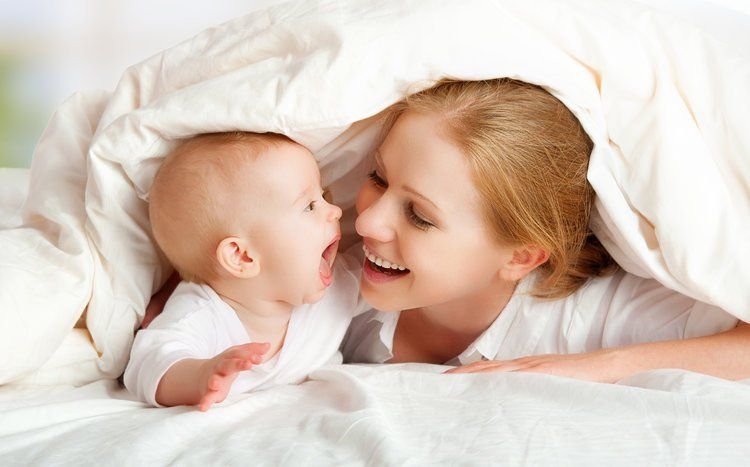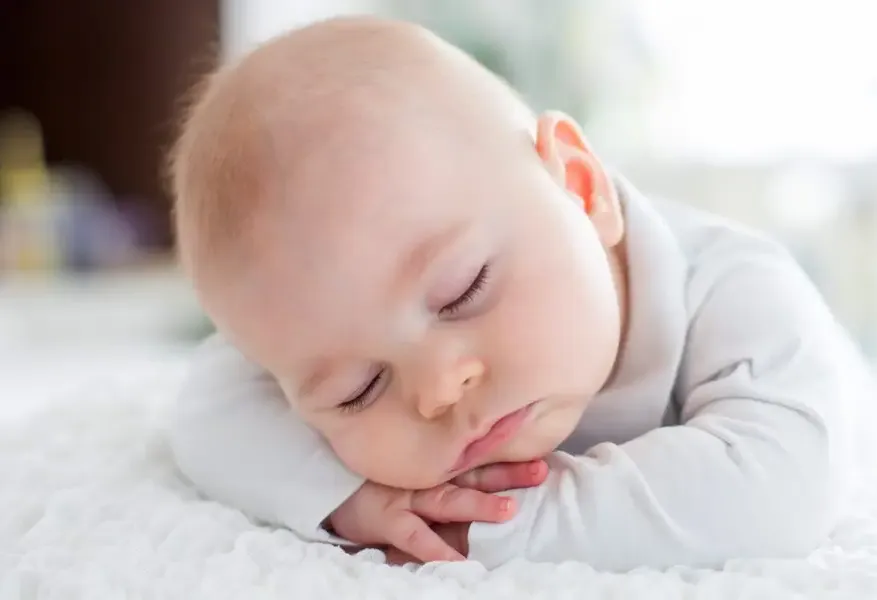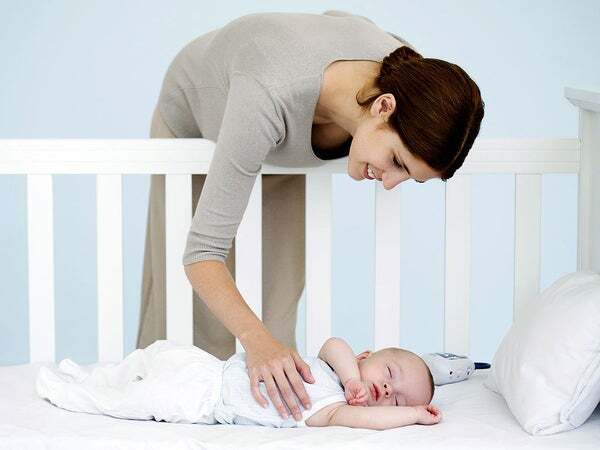Welcome
As Sleep Consultants we are passionate about helping parents and their children in resolve problematic sleep issues. Children who cannot sleep or will not sleep can experience developmental concerns. Sleep deprivation also has significant impact on mental and physical well being of parents.
With extensive knowledge of sleep science and what is developmentally appropriate for your child, we will help identify patterns, behaviours and external factors which may contribute to sleep problems. We will work with you to develop a tailored plan including practical tools and techniques focused on improving sleep routines for your child to benefit your whole family.

Our Knowledge
Our expertise covers the physiology of sleep, the importance of sleep in babies and children and the relationship between diet/nutrition, exercise, routine and sleep at all stages from new-born to 12 years old. Our commitment to you extends beyond just Sleep Consultancy. With over 15-year experience in childcare and development we have in-depth knowledge and range of expertise to provide effective support tailored to your child's needs. Our range of services cover;
Sleep Physiology
- What is sleep and why we need it
- Regulatory mechanisms
- Stages of sleep and sleep cycles
Healthy sleep and supporting sleep
- Healthy sleep associations
- Causes and effects of lack of sleep
- Sleep hygiene
Conditions affecting sleep
- Sleep disorders
- Acute illness
- Bedtime resistance
Strategies
- Identifying a situation
- Provision of a sleep plan
Special cases
- Autism
- ADHD, multiples
Sleep training techniques
Why is Sleep Important For Children?
Author: Danielle Pacheco | Medically Reviewed by: Dr. Nilong Vyas (Pediatrician MD)
Sleep is an essential building block for your child’s mental and physical health. If you’re finding it difficult to help your child sleep, you’re not alone. Studies show sleep problems affect 25 to 50 percent of children and 40 percent of adolescents.
In addition to having a direct effect on happiness1, research shows that sleep impacts alertness and attention2, cognitive performance3, mood4, resiliency5, vocabulary acquisition6, and learning and memory7. Sleep also has important effects on growth, especially in early infancy8. In toddlers, napping appears to be necessary for memory consolidation9, executive attention10, and motor skill development11.
Understanding your child’s sleep needs is the first step towards providing better sleep for your child. Through a combination of sleep hygiene, age-appropriate routines, and close attention to any sleep disorders, you can help your child get the rest they need to grow up strong and healthy.

When Children Don’t Get Enough Sleep?
Author: Danielle Pacheco | Medically Reviewed by: Dr. Nilong Vyas (Pediatrician MD)
As every parent knows, a child that’s short on sleep can swing between being grumpy and hyperactive, with effects that can mimic ADHD12. Sleepiness can also affect your child’s ability to pay attention, with ramifications for their performance in school. Even minimal sleep restriction13 can have effects on your child’s day-to-day life.
Poor sleep in early childhood has been linked to allergic rhinitis14 and problems with the immune system15, as well as anxiety and depression16. There is also emerging evidence that poor sleep in childhood may carry future cardiovascular risks in the form of obesity, diabetes17, and high blood pressure18. In adolescents, inadequate sleep can have long-term effects on academic performance19 and mental health20
Sleep Problems in Children
Author: Danielle Pacheco | Medically Reviewed by: Dr. Nilong Vyas (Pediatrician MD)
Issues that might seem minor to us are often very significant to a child, so events like a new sibling, teething, an illness, a different place, a new caregiver, a change in schedule, or minor complaints like allergies, colds, and ear infections can all take their toll on your child’s sleep. In addition to these common problems, as many as 50 percent21 of children suffer from sleep disorders at some point. Sleep disorders are intricately intertwined with mental and physical health22 issues, with one exacerbating the other in a cycle that can be hard to break. Additionally, some sleep disorders are not evident to the sleeper, or they may mirror other conditions such as epilepsy, making them difficult to diagnose23.
Some of the most common sleep disorders in children are night terrors and nightmares, sleep apnea, sleep talking and sleepwalking, snoring, and restless leg syndrome.
Night Terrors and Nightmares
Nightmares can be frightening for toddlers, who have a harder time distinguishing what’s real and what’s not. Children often wake up from nightmares, which usually occur during REM sleep. If this happens, offer them reassurance and gently put them back to sleep.
Night terrors, otherwise known as sleep terrors, are a parasomnia that occurs early in the night during non-REM sleep in about one-third of children24. Your child may scream and bolt upright during a night terror, but they won’t usually wake up or remember the incident in the morning. The best thing you can do is make sure your child is safe, trying to keep them in bed if possible. There’s no need to wake them up or worry if your child experiences the occasional night terror, but if they become very frequent or if they’re causing daytime sleepiness, they’re worth mentioning to your pediatrician.
Sleep Talking and Sleepwalking
Sleep talking is a relatively common parasomnia involving vocalizations during sleep. Sleep talking appears to occur more frequently during light sleep, so proper sleep hygiene may help reduce episodes. While harmless on its own, sleep talking may disturb other people in the bedroom. It is sometimes connected to other sleep disorders such as nightmares or sleepwalking.
Research suggests that 1 in 3 children will sleepwalk before the age of 13, with most episodes occurring in the pre-teen years. As with sleep talkers, sleepwalkers are not aware of their surroundings and usually have no recollection of their activity afterward. In addition to daytime sleepiness, sleepwalking can have serious consequences depending on the person’s actions. If your child sleepwalks, it’s a good idea to safety-proof their bedroom and install an alarm. Waking someone up about half an hour before their regular sleepwalking episode occurs has proven useful.
Snoring and Sleep Apnea
Just as with adults, it’s normal for children to snore occasionally. Snoring in children may be caused by swollen tonsils or adenoids, allergies, obesity, secondhand smoke, or other factors. However, if you notice your child snoring excessively, or displaying pauses in breathing followed by gasps, they may have sleep apnea.
Children with sleep apnea suffer from disrupted breathing which prompts them to wake up multiple times during the night, often without them realizing. The first clue that something is wrong may be when you notice your child displaying the hallmark signs of sleep deprivation, such as daytime sleepiness, difficulty concentrating, and hyperactivity. Frequent snoring and sleep apnea can both have ill effects on your child’s health and cause disruptions to other members of the family. Talk to your pediatrician about ways to reduce symptoms.
Restless Legs Syndrome
Characterized by an irrepressible urge to move the legs, restless legs syndrome in children25 can be difficult to identify. You may think your child is simply fidgeting or suffering from growing pains. Treatment of nighttime restless leg syndrome in children includes proper sleep hygiene and stretching before bed26. Iron supplements have proven useful in treating adults, but research is still being conducted into the safety and efficacy of iron supplements for children.
If you think your child may be suffering from one of these sleep disorders, keep track of the symptoms in a sleep diary, and talk to your pediatrician. Establishing good sleep hygiene habits and eliminating other barriers to proper sleep is the first line of defense in treating many of these conditions.
References
- Hall, W. A., Scher, A., Zaidman-Zait, A., Espezel, H., & Warnock, F. (2012). A community-based study of sleep and behaviour problems in 12- to 36-month-old children. Child: care, health and development, 38(3), 379–389. https://doi.org/10.1111/j.1365-2214.2011.01252.x
- Waldon, J., Vriend, J., Davidson, F., & Corkum, P. (2018). Sleep and Attention in Children With ADHD and Typically Developing Peers. Journal of attention disorders, 22(10), 933–941.https://doi.org/10.1177/1087054715575064
- Paavonen, E. J., Räikkönen, K., Pesonen, A. K., Lahti, J., Komsi, N., Heinonen, K., Järvenpää, A. L., Strandberg, T., Kajantie, E., & Porkka-Heiskanen, T. (2010). Sleep quality and cognitive performance in 8-year-old children. Sleep medicine, 11(4), 386–392. https://doi.org/10.1016/j.sleep.2009.09.009
- Maasalo, K., Fontell, T., Wessman, J., & Aronen, E. T. (2016). Sleep and behavioural problems associate with low mood in Finnish children aged 4-12 years: an epidemiological study. Child and adolescent psychiatry and mental health, 10, 37. https://doi.org/10.1186/s13034-016-0125-4
- Hairston, I. S., Conroy, D. A., Heitzeg, M. M., Akbar, N. Z., Brower, K. J., & Zucker, R. A. (2016). Sleep mediates the link between resiliency and behavioural problems in children at high and low risk for alcoholism. Journal of sleep research, 25(3), 341–349. https://doi.org/10.1111/jsr.12382
- Horváth, K., & Plunkett, K. (2016). Frequent daytime naps predict vocabulary growth in early childhood. Journal of child psychology and psychiatry, and allied disciplines, 57(9), 1008–1017.https://doi.org/10.1111/jcpp.12583
- Dewald, J. F., Meijer, A. M., Oort, F. J., Kerkhof, G. A., & Bögels, S. M. (2010). The influence of sleep quality, sleep duration and sleepiness on school performance in children and adolescents: A meta-analytic review. Sleep medicine reviews, 14(3), 179–189. https://doi.org/10.1016/j.smrv.2009.10.004
- Zhou, Y., Aris, I. M., Tan, S. S., Cai, S., Tint, M. T., Krishnaswamy, G., Meaney, M. J., Godfrey, K. M., Kwek, K., Gluckman, P. D., Chong, Y. S., Yap, F., Lek, N., Gooley, J. J., & Lee, Y. S. (2015). Sleep duration and growth outcomes across the first two years of life in the GUSTO study. Sleep medicine, 16(10), 1281–1286. https://doi.org/10.1016/j.sleep.2015.07.006
- Kurdziel, L., Duclos, K., & Spencer, R. M. (2013). Sleep spindles in midday naps enhance learning in preschool children. Proceedings of the National Academy of Sciences of the United States of America, 110(43), 17267–17272. https://doi.org/10.1073/pnas.1306418110
- Cremone, A., McDermott, J. M., & Spencer, R. (2017). Naps Enhance Executive Attention in Preschool-Aged Children. Journal of pediatric psychology, 42(8), 837–845. https://doi.org/10.1093/jpepsy/jsx048
- Desrochers, P. C., Kurdziel, L. B., & Spencer, R. M. (2016). Delayed benefit of naps on motor learning in preschool children. Experimental brain research, 234(3), 763–772. https://doi.org/10.1007/s00221-015-4506-3
- Knight, F., & Dimitriou, D. (2019). Poor Sleep Has Negative Implications for Children With and Without ADHD, but in Different Ways. Behavioral sleep medicine, 17(4), 423–436.https://doi.org/10.1080/15402002.2017.1395335
- Vriend, J., Davidson, F., Rusak, B., & Corkum, P. (2015). Emotional and Cognitive Impact of Sleep Restriction in Children. Sleep medicine clinics, 10(2), 107–115. https://doi.org/10.1016/j.jsmc.2015.02.009
- Jernelöv, S., Lekander, M., Almqvist, C., Axelsson, J., & Larsson, H. (2013). Development of atopic disease and disturbed sleep in childhood and adolescence--a longitudinal population-based study. Clinical and experimental allergy : journal of the British Society for Allergy and Clinical Immunology, 43(5), 552–559. https://doi.org/10.1111/cea.12087
- Kim, J., Gozal, D., Bhattacharjee, R., & Kheirandish-Gozal, L. (2013). TREM-1 and pentraxin-3 plasma levels and their association with obstructive sleep apnea, obesity, and endothelial function in children. Sleep, 36(6), 923–931. https://doi.org/10.5665/sleep.2726
- Hochadel, J., Frölich, J., Wiater, A., Lehmkuhl, G., & Fricke-Oerkermann, L. (2014). Prevalence of sleep problems and relationship between sleep problems and school refusal behavior in school-aged children in children's and parents' ratings. Psychopathology, 47(2), 119–126.https://doi.org/10.1159/000345403
- Dutil, C., & Chaput, J. P. (2017). Inadequate sleep as a contributor to type 2 diabetes in children and adolescents. Nutrition & diabetes, 7(5), e266. https://doi.org/10.1038/nutd.2017.19
- Sparano, S., Lauria, F., Ahrens, W., Fraterman, A., Thumann, B., Iacoviello, L., Marild, S., Michels, N., Molnar, D., Moreno, L. A., Tornaritis, M., Veidebaum, T., & Siani, A. (2019). Sleep duration and blood pressure in children: Analysis of the pan-European IDEFICS cohort. Journal of clinical hypertension (Greenwich, Conn.), 21(5), 572–578. https://doi.org/10.1111/jch.13520
- Owens, J. A., Dearth-Wesley, T., Lewin, D., Gioia, G., & Whitaker, R. C. (2016). Self-Regulation and Sleep Duration, Sleepiness, and Chronotype in Adolescents. Pediatrics, 138(6), e20161406.https://doi.org/10.1542/peds.2016-1406
- Raniti, M. B., Allen, N. B., Schwartz, O., Waloszek, J. M., Byrne, M. L., Woods, M. J., Bei, B., Nicholas, C. L., & Trinder, J. (2017). Sleep Duration and Sleep Quality: Associations With Depressive Symptoms Across Adolescence. Behavioral sleep medicine, 15(3), 198–215. https://doi.org/10.1080/15402002.2015.1120198
- Carter, K. A., Hathaway, N. E., & Lettieri, C. F. (2014). Common sleep disorders in children. American family physician, 89(5), 368–377.https://www.aafp.org/afp/2014/0301/p368.html
- Licis A. (2017). Sleep Disorders: Assessment and Treatment in Preschool-Aged Children. Child and adolescent psychiatric clinics of North America, 26(3), 587–595. https://doi.org/10.1016/j.chc.2017.02.009
- Maski, K., & Owens, J. A. (2016). Insomnia, parasomnias, and narcolepsy in children: clinical features, diagnosis, and management. The Lancet. Neurology, 15(11), 1170–1181.https://doi.org/10.1016/S1474-4422(16)30204-6
- Petit, D., Pennestri, M. H., Paquet, J., Desautels, A., Zadra, A., Vitaro, F., Tremblay, R. E., Boivin, M., & Montplaisir, J. (2015). Childhood Sleepwalking and Sleep Terrors: A Longitudinal Study of Prevalence and Familial Aggregation. JAMA pediatrics, 169(7), 653–658.https://doi.org/10.1001/jamapediatrics.2015.127
- RLS & Kids. (n.d.). Restless Legs Syndrome Foundation. Retrieved September 3, 2020, from https://www.rls.org/understanding-rls/rls-kids
- DelRosso, L., & Bruni, O. (2019). Treatment of pediatric restless legs syndrome. Advances in pharmacology (San Diego, Calif.), 84, 237–253. https://doi.org/10.1016/bs.apha.2018.11.001

